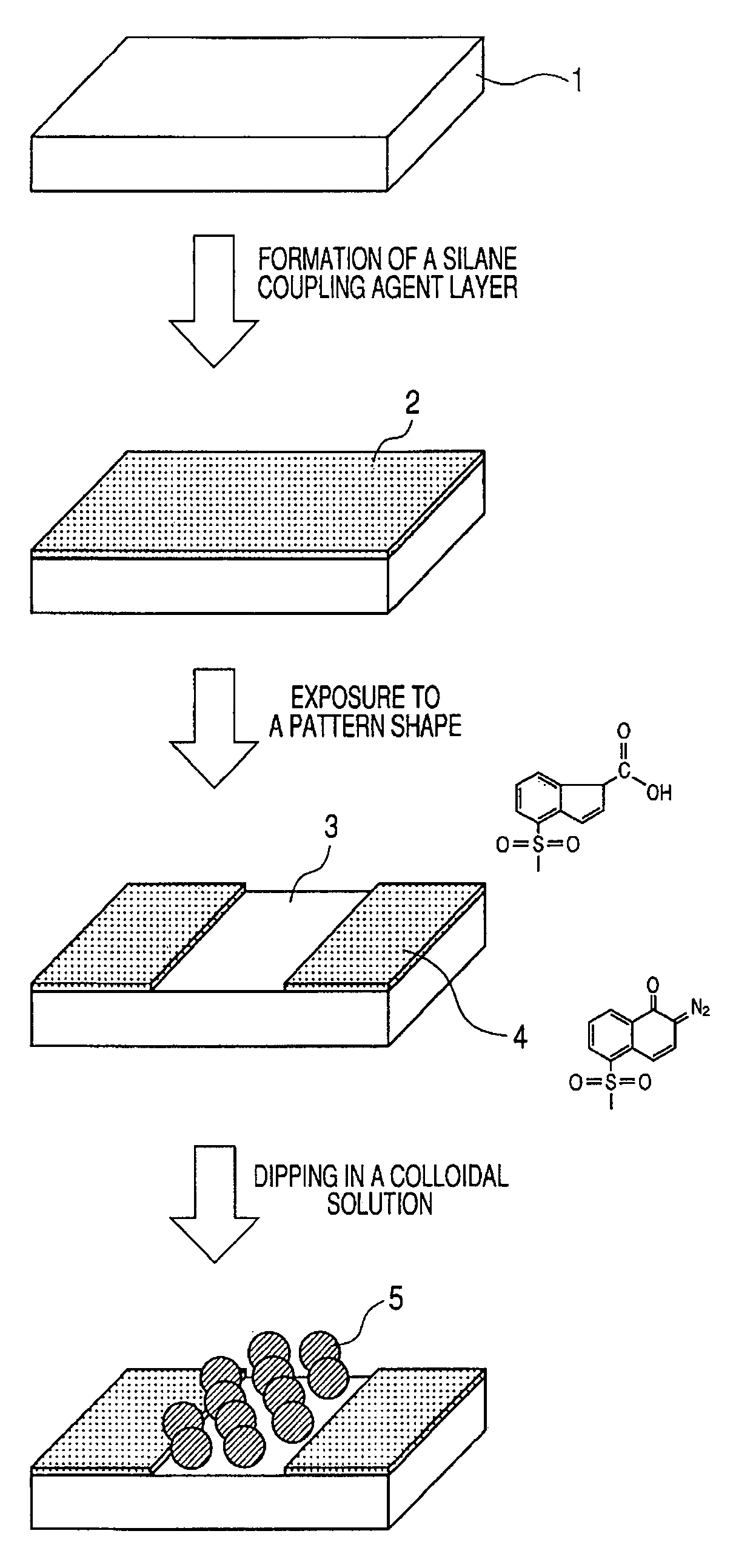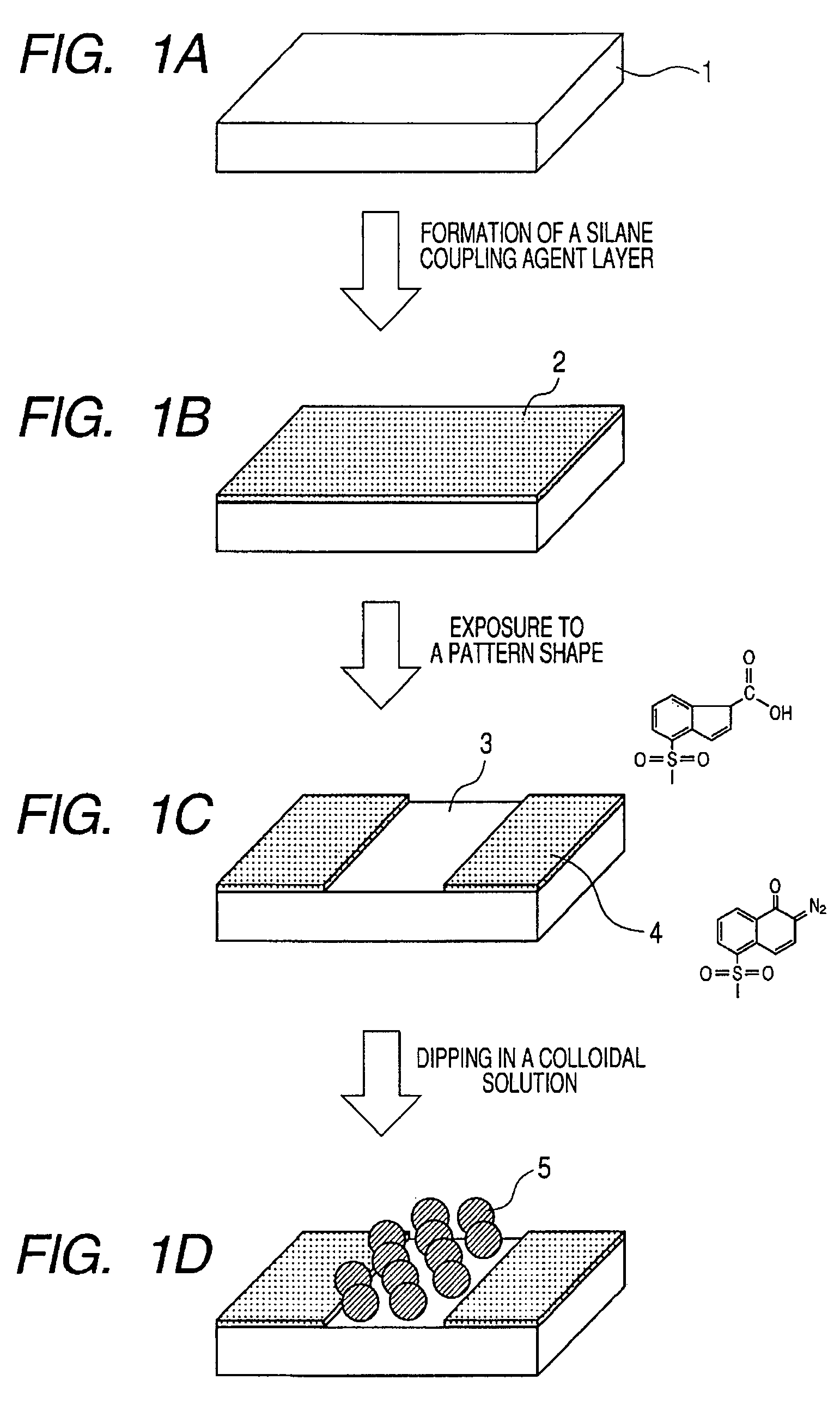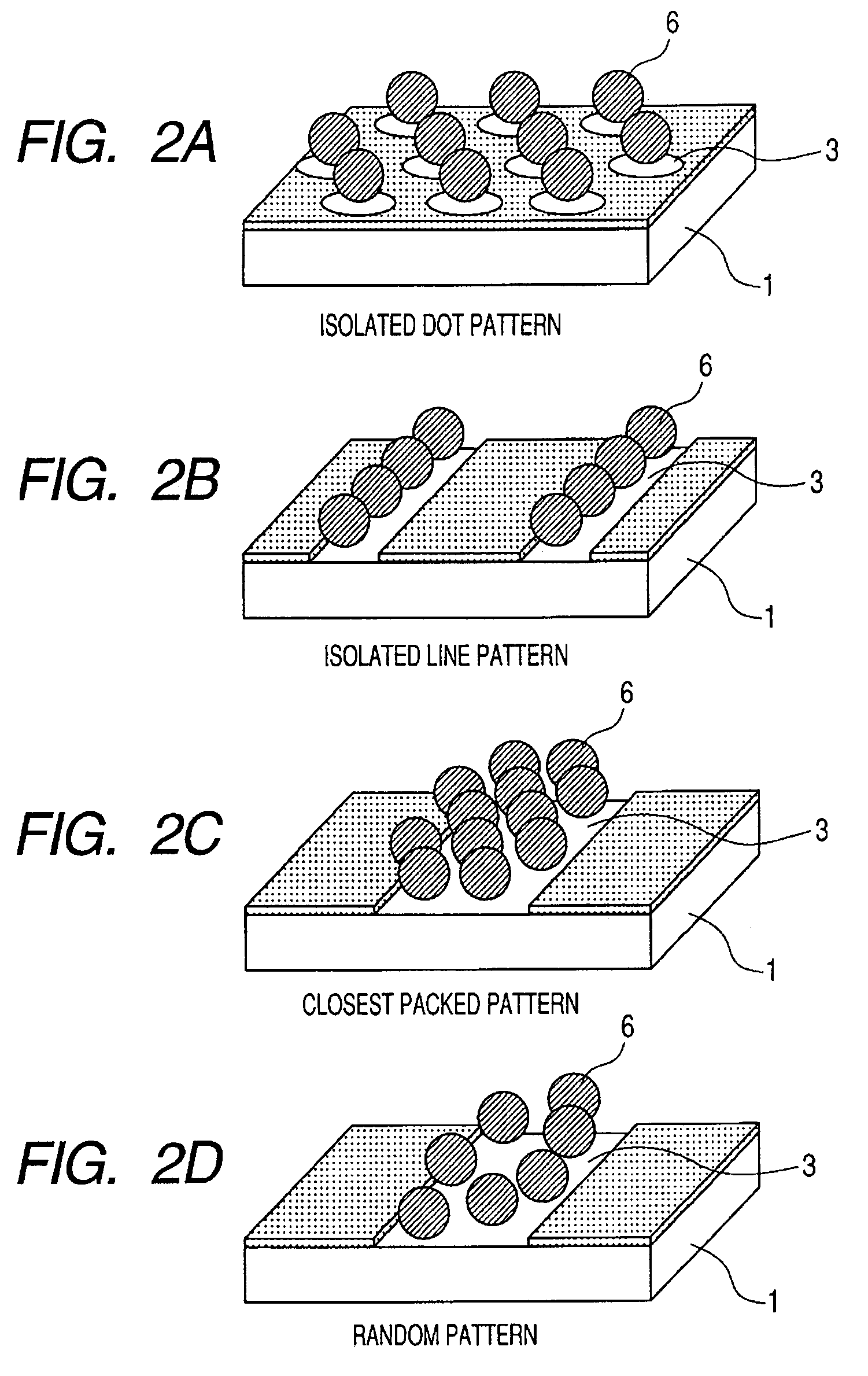Photosensitive silane coupling agent, method of modifying surface, method of forming pattern, and method of fabricating device
a technology of photosensitive silane and coupling agent, which is applied in the direction of photosensitive materials, instruments, photomechanical equipment, etc., can solve the problems of increasing the size of equipment, many problems that need to be resolved, and the limitation of the light diffraction limit for the resolution of reduced projection exposur
- Summary
- Abstract
- Description
- Claims
- Application Information
AI Technical Summary
Benefits of technology
Problems solved by technology
Method used
Image
Examples
examples
[0082]The method of forming a pattern using the above-described photosensitive silane coupling agent will now be described in more detail based on the drawings.
[0083]FIGS. 1A, 1B, 1C and 1D are a process chart illustrating one embodiment of a method for forming a pattern using the photosensitive silane coupling agent according to the present invention.
[0084]The photosensitive silane coupling agent according to the present invention is immobilized on a substrate via a chemical bond. Examples of the substrate include a metal substrate, a semiconductor substrate, an insulating substrate such as glass, quartz, BN or the like. In addition, the substrate can be selected depending on the desired device from among a broad range of substrates having, for example, one or plural kinds of resist, spin-on-glass, metal, oxide, nitride or the like formed as a film on the above-described substrates. Preferably, a hydroxyl group is formed on the surface immobilizing the photosensitive silane couplin...
PUM
| Property | Measurement | Unit |
|---|---|---|
| particle diameter | aaaaa | aaaaa |
| particle diameter | aaaaa | aaaaa |
| wavelengths | aaaaa | aaaaa |
Abstract
Description
Claims
Application Information
 Login to View More
Login to View More - R&D
- Intellectual Property
- Life Sciences
- Materials
- Tech Scout
- Unparalleled Data Quality
- Higher Quality Content
- 60% Fewer Hallucinations
Browse by: Latest US Patents, China's latest patents, Technical Efficacy Thesaurus, Application Domain, Technology Topic, Popular Technical Reports.
© 2025 PatSnap. All rights reserved.Legal|Privacy policy|Modern Slavery Act Transparency Statement|Sitemap|About US| Contact US: help@patsnap.com



